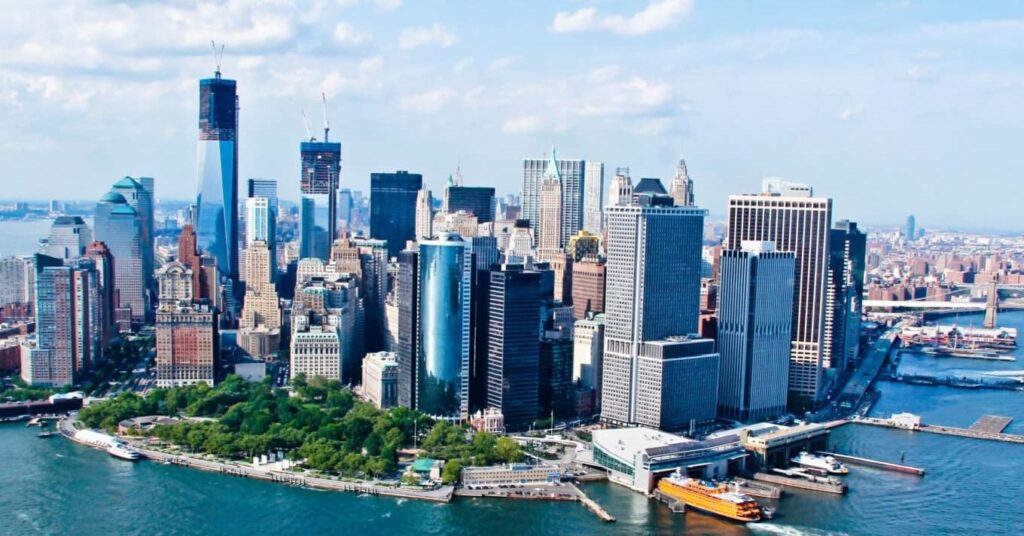New York City has been home to many famous people and pivotal moments in history. They don’t have those traits. If you want to know the real story of wild things in New York City, read on to learn what I consider to be not-so-insignificant facts about the city.
Information About New York City That Will Astound You
What, then, do you assume to know about the Big Apple? Possible explanations include the city’s size (five boroughs), population (over eight million), the Statue of Liberty’s origin (a gift from the French government), etc. But this list goes way beyond the obvious to explore what makes New York City so fascinating. I’ve spent decades in New York and have dedicated myself to becoming an expert on the city. Now it’s your turn to succeed. I’m a Jeopardy! champion! totaling 12 occurrences. Being the superstar and world champion that I am, I am always on the lookout for interesting and novel facts about New York (and other places). New York City is also a fashion capital. Visit Slingo.com to learn more about the high-end labels now in stock at New York City locations.
New York City has recently played host to the world’s fastest bird.
Even though people in New York are known for their speed with the “bird flip,” there is a faster bird in the city. There’s a good chance that if you Google “the fastest animal in New York City,” images of Pizza Rats and their cheesy prey will pop up. Instead, you should look up. There are more peregrine falcons in New York City than any other city in the world, claims Smithsonian Magazine. What kind of bird is the fastest, and what is its top speed? Try to picture traveling at a speed of 320 km/h (200 miles per hour). It’s fast, to put it plainly. After coming into contact with the pesticide DDT a few short decades ago, the peregrine falcon was nearly extinct, as reported by the New York Times and other sources. Raptors like these once nearly went extinct, but thanks to extensive conservation efforts, they are thriving again. The peregrine falcon, which is native to cliffs, finds the skyscraper density of Manhattan strikingly similar to the rocky habitats of its preferred nesting and hunting prey, the rock dove or common pigeon. Almost everywhere on Earth that isn’t perpetually frozen over is home to peregrine falcons, making them the second most widely distributed bird after hummingbirds. the most dispersed population on the face of the earth? A pigeon was their intended victim. Peregrine falcons are a welcome addition to the New York City ecosystem now that reintroduction programs have resulted in dozens of nesting falcons living under city bridges and swooping through the city’s skies. They’re foreigners who found refuge in our city and are making the most of their newfound fortune. You are missing a great chance because of this. Pigeon-hunting hawks and falcons. They eat a lot of pigeons. Trying to find the fastest bird in the world while bird watching in New York City?
Guggenheim Museum was inspired by the idea of a drive-through theme park.
It’s just a happy accident that it looks like a spiral. Many of Frank Lloyd Wright’s gas stations, carports, garages, and showrooms reflect his long and fascinating relationship with automobiles. Wright’s enthusiasm for and creativity in the automobile industry made him a classic early adopter. Given his preference for vertical over horizontal space, it’s not surprising that the Solomon R. Guggenheim Museum on Fifth Avenue, one of his few truly urban projects, is vertical rather than horizontal. The building’s signature spiral—er, helical—edifice was inspired by Wright’s love of automobiles and was designed with that inspiration in mind. The famous Bramante staircase in the Vatican Museums was reverse engineered to incorporate with a luxurious ski lodge and state-of-the-art parking garage. The naturalistic lighting and serene atmosphere at one of New York’s most visited attractions are the result of a collaboration between two designers who are better known for their use of right angles and planar structures. Tourists shouldn’t try to ascend the Guggenheim, but rather make their way slowly down. Take the elevator to the top of the helix and admire the artwork and architecture from that vantage point. As you coast downhill to take in a world-class exhibition, picture Wright in the back of his Lincoln Continental, daydreaming about a pleasant ride up an unrealized spiral road in the Maryland Appalachians. After you’ve seen the Guggenheim, stop by the Francis Little House replica at the Metropolitan Museum of Art to see another Wright masterpiece without the crowds.
Where Did Everyone From the Moondance Diner in Wyoming Go?
Jean-Michel Clajot (via Creative Commons) has shared the following image: CC BY-SA 3.0, via Wikimedia Commons The restaurant moved to this location. The Moondance Diner, a former West SoHo landmark, has appeared in a number of major motion pictures. Monica Gellar, played by Courtney Cox on “Friends,” has a brief stint in real life as a singing waitress. Mary Jane Watson (Kirsten Dunst) works there in the 2002 film “Spider-Man.” And “tick tick… BOOM!” is based on Jonathan Larsen’s actual experience at a diner. Larsen’s portrayal was done digitally because the real Moondance had left New York 14 years before. It settled down in the… greener pastures of Wyoming’s rural communities. After the famous Moondance Diner in La Barge, Wyoming was sold, an enterprising couple bought it and moved it back to La Barge, where it is once again a busy diner. Unfortunately, it seems as though we will never learn the fate of the Moondance, as the company that created it went bankrupt in 2012. Need to experience the true energy of a New York City diner? You can get singing waiters at places like the Empire Diner in Chelsea, Jackson Hole in Astoria, and Ellen’s Stardust Diner in the middle of Times Square. Going on a culinary tour of Hell’s Kitchen is one way to avoid leaving the West Side entirely.
The Menu’s Star Turn Began in New York.
Put me down for one of those, two of those, and one of those, please. The famous Delmonico’s in New York City is widely regarded as the first restaurant in the United States to feature a menu. Sure, the French can be officially credited with the invention of the menu. Whether it was first sold in 1837 at the original Delmonico restaurant or in 1845 at the new Delmonico restaurant is debatable. Before Del’s (as it was known to its affluent clientele), diners had to make do with whatever was on the menu at the local tavern or hotel. After eating at Delmonico’s, the customer was presented with a broader selection of alternatives. In fact, the innovation was so well received that “foodies” even today often confuse the decidedly ordinary fare served at a budget restaurant with the kind of food served at Delmonico’s. Del’s has changed hands and addresses numerous times, and the current iteration is in the midst of a legal battle. Locals and tourists alike are curious as to its future. Those who are seeking the first Del’s can expect it to reopen in this location. The reconstructed Fraunces Tavern is right around the corner, Keens Steakhouse is in Herald Square, Old Homestead is in the Meatpacking District (it first opened in 1868) and Landmark Tavern is in Hell’s Kitchen, so you won’t go hungry if you find yourself in New York City but without a reservation at Delmonico’s (1868).
A neighborhood in Queens can be said to have been “built” on pianos.
No factories were destroyed here like in Billy Joel’s “Allentown.” Across the East River from busy Manhattan, in a relatively unpopulated area of Long Island, a factory town sprang up that ran counter to the nation’s dominant corporate housing interests. The music industry also played a significant role in the overall economy. The vertically integrated factory of Steinway & Sons served as both inspiration and impetus for the construction of the residential neighborhood Steinway Village. They had eventually come to be accepted as the norm for piano manufacturing. The central factory in Steinway Village was surrounded by residential areas, commercial areas (including steel plants, sawmills, shipping and processing facilities, and public transportation like streetcars and ferries), and the waterways. Back then, Long Island City wasn’t even a part of Queens; it was its own borough. Similar to how “Born in the USA” and “Fortunate Son” are now incorrectly portrayed as patriotic songs, the period known as “The Gilded Age” was misunderstood as a golden age of prosperity. Rose-colored spectacles Despite being the name of Mark Twain’s satirical novel lamenting the rampant greed and corruption of the Robber Baron era, the term was widely viewed as positive. They mistook the term for referring to the wage growth at the end of the nineteenth century, failing to recognize the pervasive poverty and persistent exploitation that persisted in industrial communities like this one. The founding of Steinway & Sons, a modern day institution in Astoria, was motivated in part by a paternalistic “we know better” attitude toward protecting the male population from the seductive temptations of Manhattan across the river. A solid middle-class foundation was laid, however, by the company’s efforts, paving the way for the coming consolidation of Greater New York in 1898. Even though tours have not yet resumed, the current building at One Steinway Place can still be viewed, and a virtual tour of the Steinway Factory can be arranged. Travel across the East River to Midtown Manhattan and check out the Steinway Hall piano showroom.






